From New Yorker Gown Salon and New Yorker PVR to Romack, discover the family fashion house as it commits to preserving the past, embracing the present, and crafting a future that binds generations
Generation can mean many things: a relay of wisdom, the evolution of traditions, and the interweaving of stories that bind families and communities across time. In the Romack family, generations signify a singular atelier that transcends eras, where craftsmanship is a language passed down through the hands of ancestors, echoing a legacy that stitches together the past, present, and aspirations of the future.
RELATED: Upcycling the Trends: Creating New Art From Pre-Loved Collections
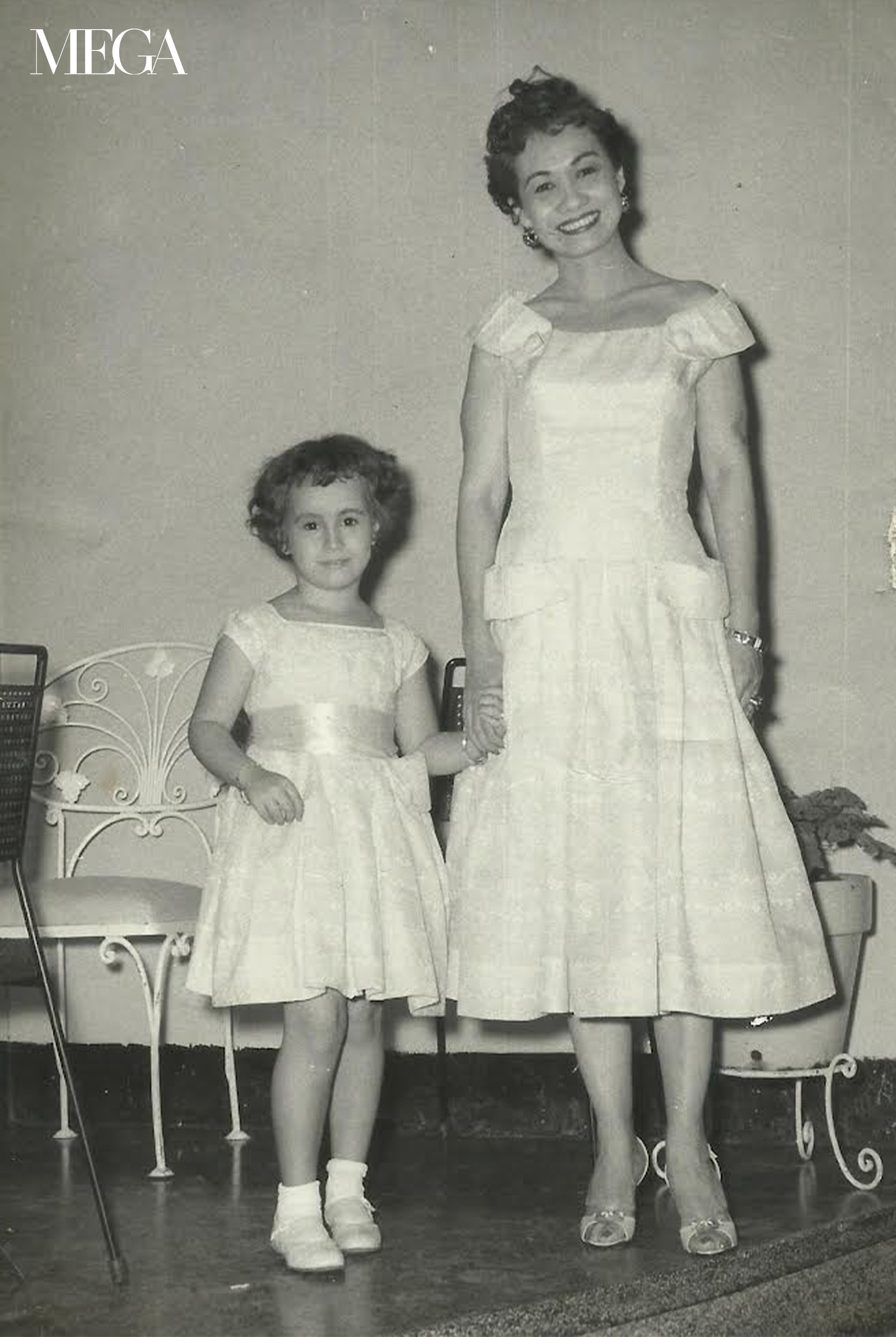
Osmosis of craftsmanship and tradition
Tina Romack Lirag takes a trajectory that sidestepped formal education in fashion and emerges organically from the immersive environment of her upbringing. The atelier bore witness to her childhood, where the notion of playing dress-up shifted into a deep understanding of design principles and client interactions. Along with the subtle layers of client stories that unfolded within those walls, it was an osmosis of craftsmanship and creativity that seeped into her consciousness, a silent yet powerful transmission of skills and passion from one generation to the next.

Lirag reflects on the brand’s rich history, dating back to its inception by her grandmother in 1935, when it was once called New Yorker Gown Salon. “When my mom and her half-sisters took over, we decided to call it New Yorker PVR with the initials of my grandmother, which is Pilar Ver Romack,” she shares. “When I took over, I changed it now to Romack. That’s probably one of the few business advices that I took,” The evolution to Romack, encapsulating Lirag’s familial ties, from her grandmother’s last name to her mother’s maiden name and now to her middle name, showcases a thoughtful nod to tradition while embracing subtle transformations.
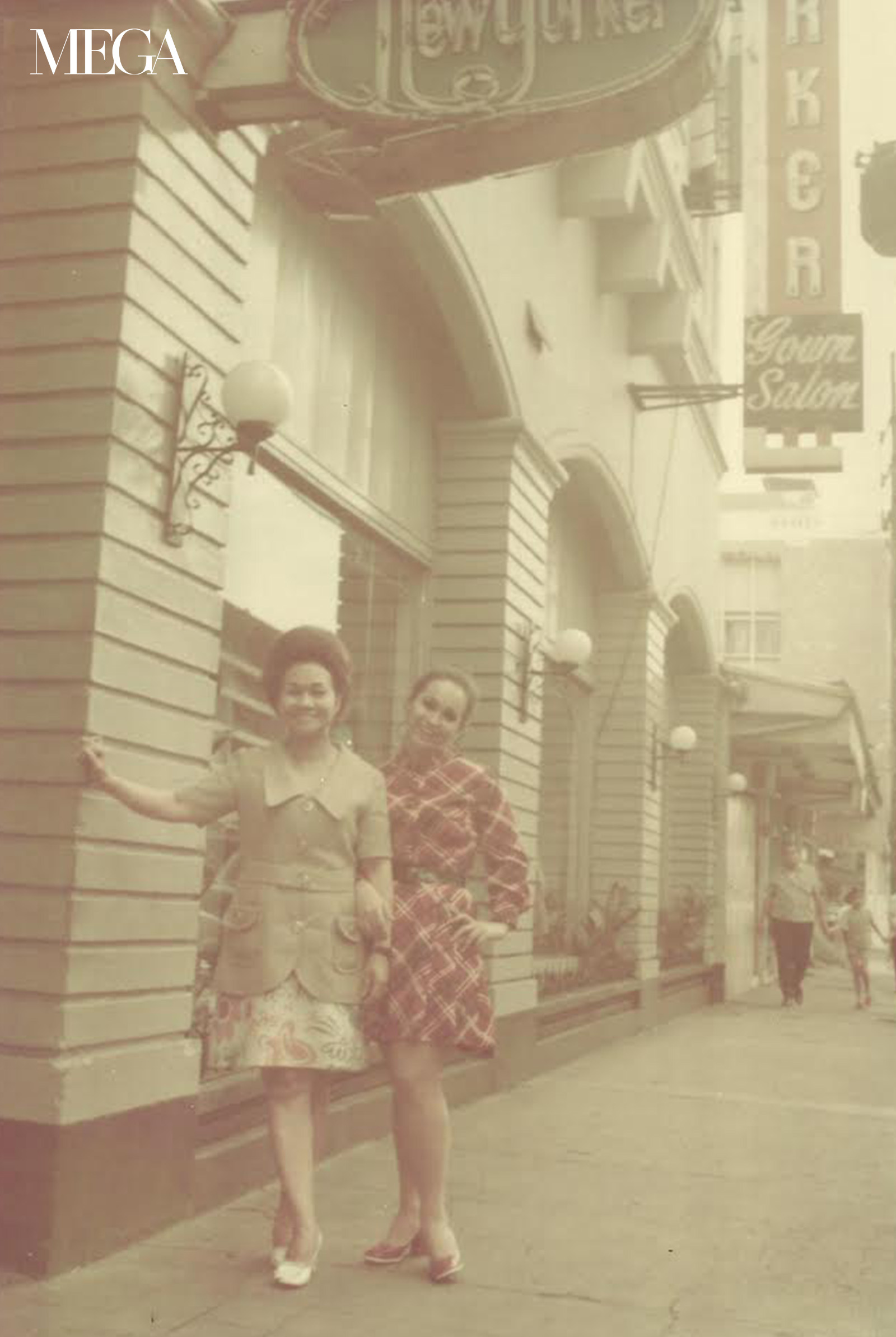
“If you’re doing a heritage brand, find and look for a word that would take you back to where it started from.” The commitment to preserving the brand’s heritage is not merely a stylistic choice but a dedication to the quality and service that has defined Romack since its beginning.
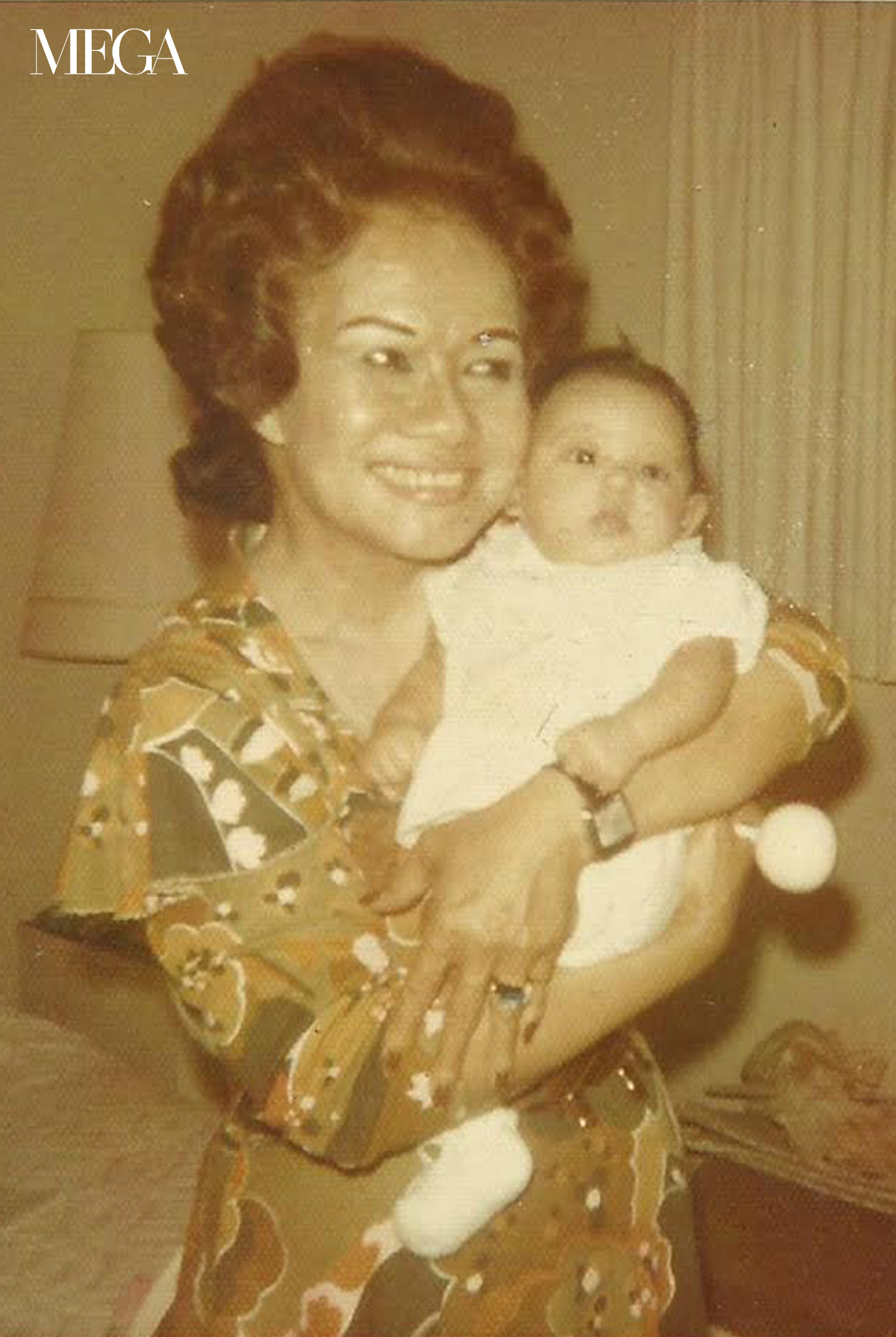
The enigmatic charm of exclusivity
One distinctive facet of Romack is its enigmatic allure, shrouded in a mystique of exclusivity. Tina elucidates on the strategic decision to eschew traditional advertising and interviews, emphasizing a personal touch that extends from client interactions to the very nomenclature of the brand. Boasting a unique charm and wrapped in an exclusive ambiance that leans more towards discretion than flamboyance, Lirag sheds light on the deliberate decision to forgo traditional advertising. She creates an intimate setting where exclusivity isn’t a proclamation but a quiet acknowledgment.
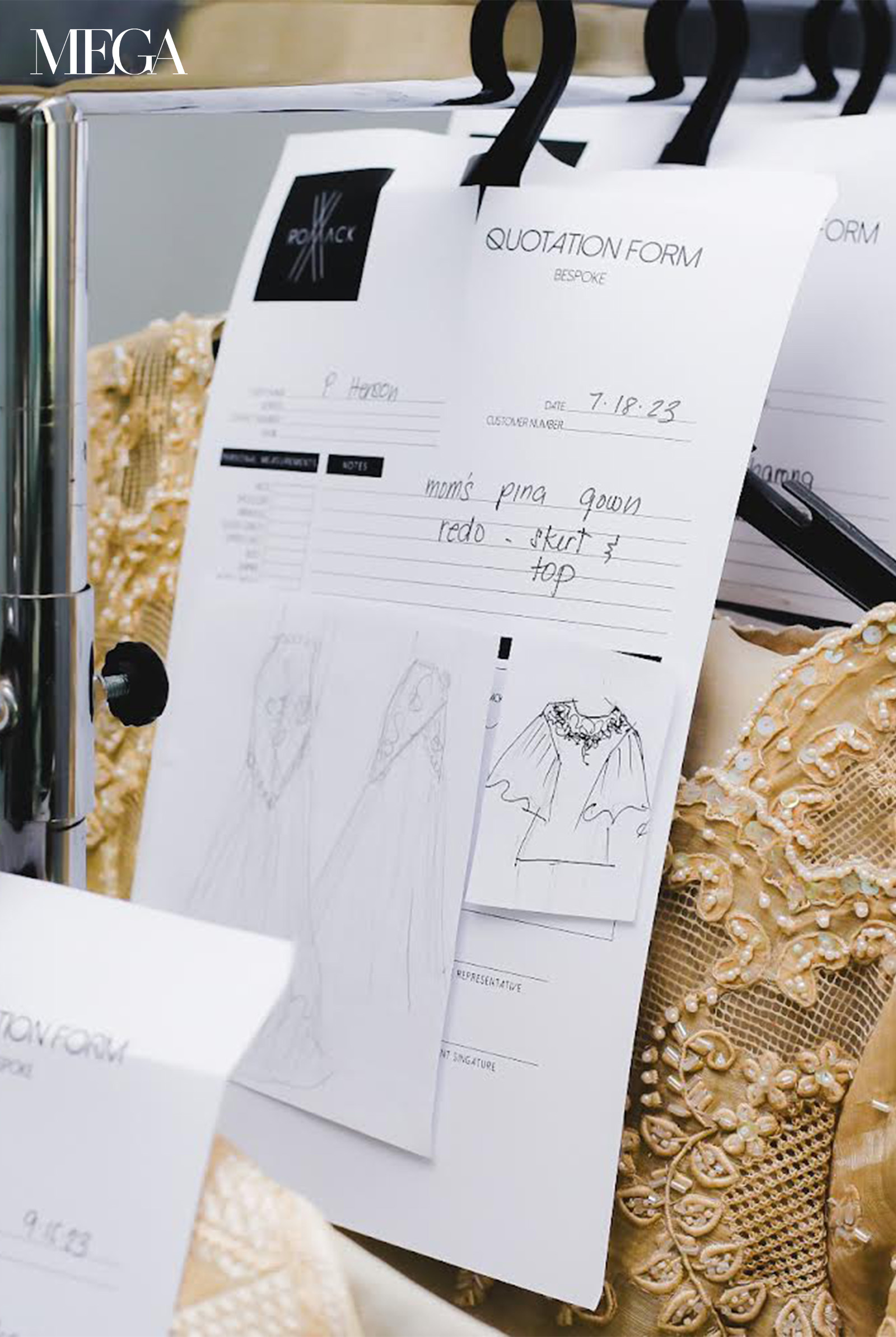
Imagine stepping into the world of Romack: a space where marketing takes a backseat, and the focus shifts to a more personal engagement. There’s no digital dissonance, just the definite feel of fabrics and a deliberate unhurriedness in every client interaction. It’s an environment reminiscent of a time when fashion was about people, not pixels. The core lies in simplicity—an intentional move to preserve origins while adjusting to the changing dynamics of the fashion scene.

The subtle notes of Romack’s philosophy
Navigating the delicate balance between tradition and innovation, Lirag grapples with the challenges and relishes the rewards inherent in maintaining a low-profile presence in an industry that incessantly craves the spotlight. “There are some clients who contact me, and I turn them down,” she confides, a subtle gravity in her voice. Their puzzled expressions, questioning why she, unlike other designers, would decline their request, echo through the atelier.
“Well, maybe they have more staff, maybe they have more time, maybe their schedule is more open,” she muses, her words carrying the weight of thoughtful consideration. Each request is not just a transaction but a piece of art delicately handled by Lirag herself. Her admission that this level of personal commitment might be deemed “a little bit too much” resonates with sincerity. Yet, amid an industry propelled by efficiency and scale, Lirag unapologetically champions a different rhythm. “I’d rather make sure that my pieces speak for themselves, my clothes speak for themselves.”
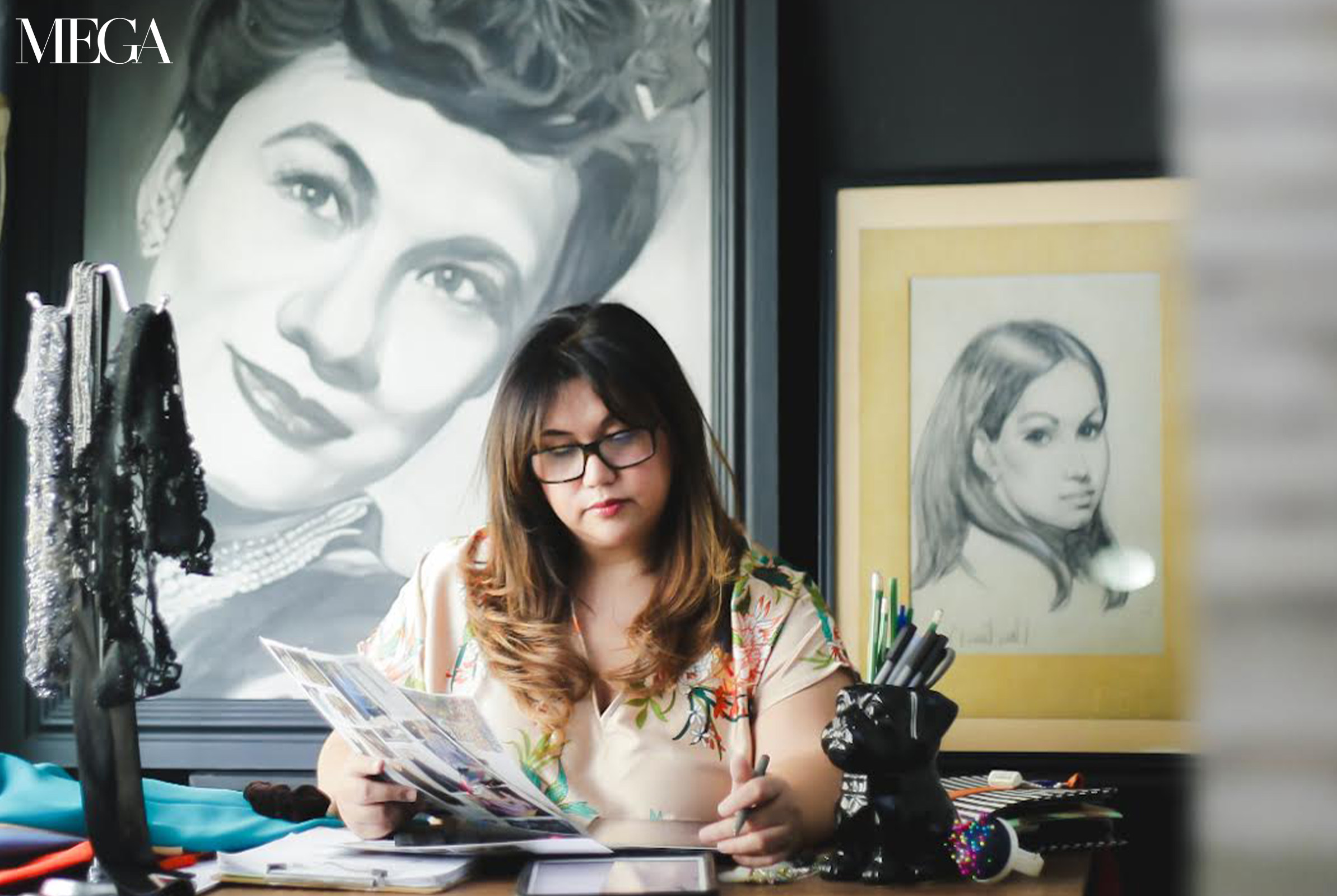
The dichotomy of tradition and innovation becomes a dynamic confluence, where the magnetic pull of contemporary marketing strategies tempts, but the brand’s philosophy acts as a steadfast anchor. Lirag remains resolute, acknowledging the shifting tides but standing firm in her conviction. The rewards, though not measured in virtual likes or digital metrics, manifest in the satisfaction of clients who find solace in the familiar embrace of a brand unswayed by transient favors.
Further, Lirag’s design aspirations are one of inclusivity and empowerment. “You know what, honestly, I don’t have a list of anyone I would want to design for. But I think I’m more of the I want people to know that no matter what size, shape or form you are, you can look good in clothes, and you deserve to look good in clothes,” she asserts with a genuine passion for celebrating diversity.
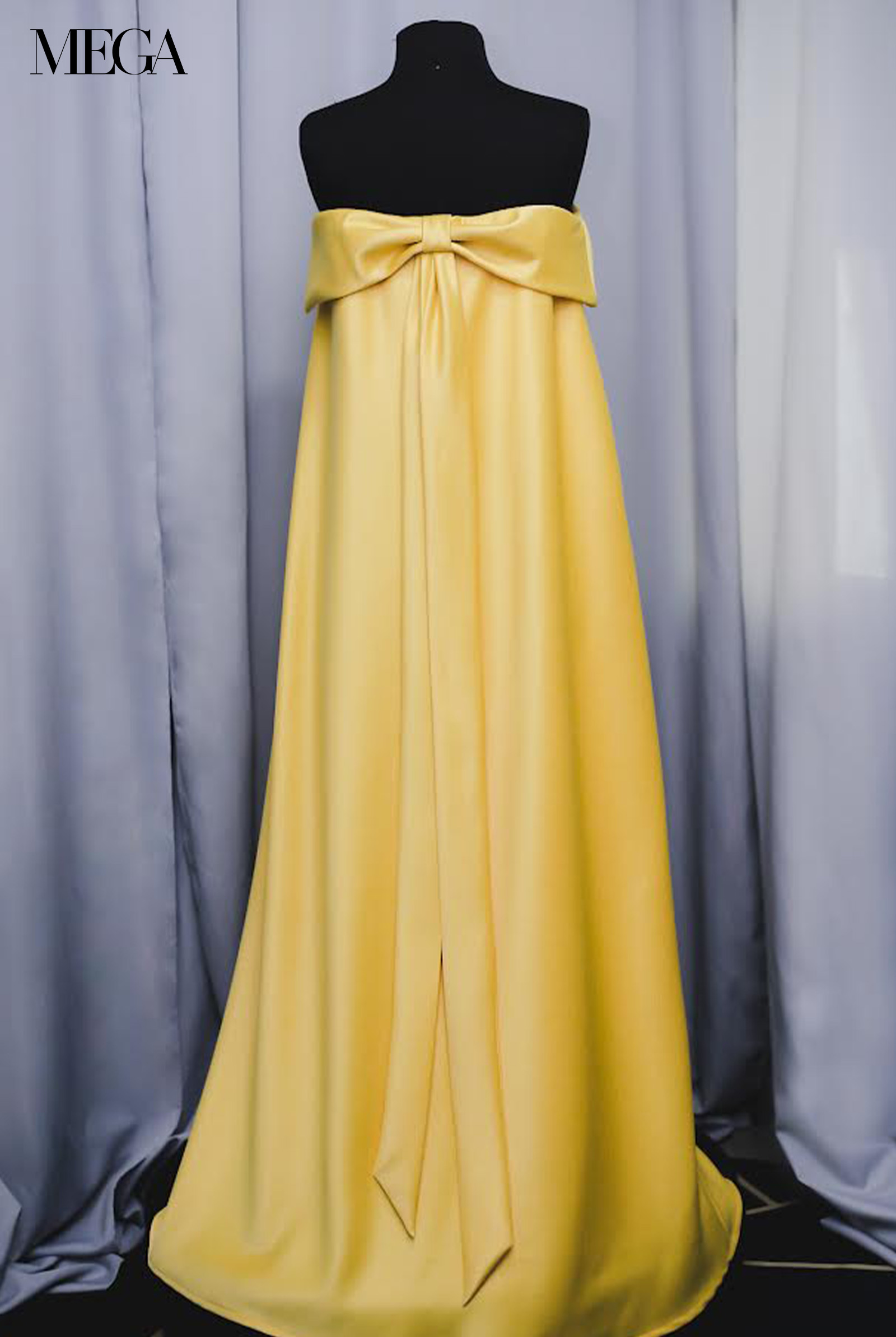
Her ethos is rooted in rejecting the notion that clothing should merely fit, emphasizing that satisfaction shouldn’t hinge on conforming to a specific size. In her pursuit of creating ready-made pieces, inclusivity takes center stage—each garment is crafted with a conscientious effort to cater to a diverse range of sizes. Lirag’s vision goes beyond the attraction of celebrity clients; instead, her goals are deeply integrated into the everyday lives of real people. “So for me, it’s more of not a specific person, not a famous person, it’s more of, ‘I would want real people.’ Those would be my goals: to be able to get a person who feels like they’ve never looked good in clothes, have them come to me and say, ‘You know what, with these little tweaks, you look good.'”
Breathing new life into treasures
How they come back is one that retrieves old recollections into new treasures. Lirag conducts investments—breathing new life into the forgotten through the art of upcycling. “We’ve learned how to actually preserve the integrity of the dress more than rip it apart, and take its pieces and try to incorporate that with something new.” It’s the practice of renewal where the aged becomes gilded, torn transforms into revitalized elegance, and the broken finds unity in the stitches of creativity.
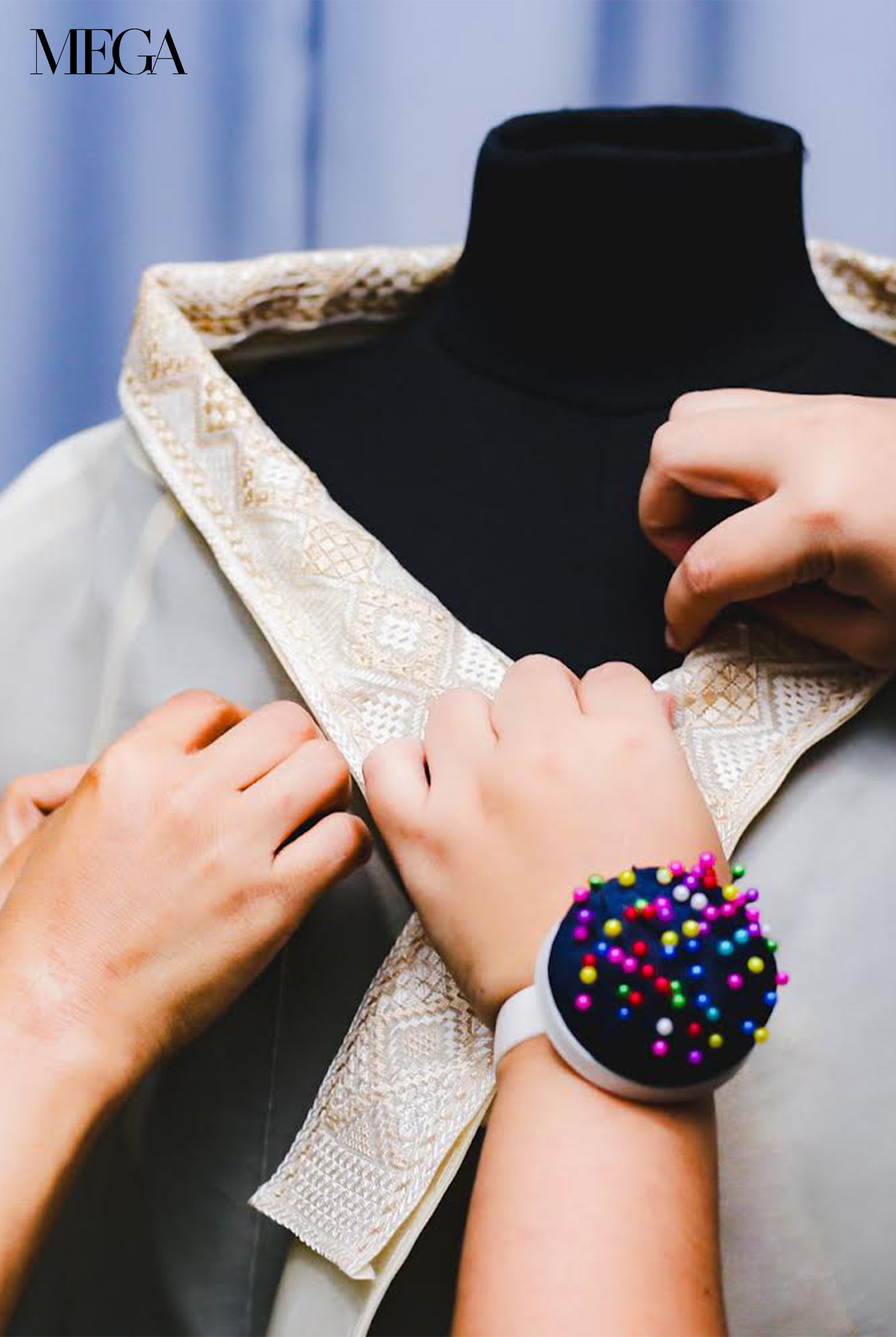
The notion that “something old can be gold” takes on a metaphorical meaning. “I always ask them if they have any pieces from their grandparents, their dad, their mom,” she discloses, as if inviting clients to diversify their fashion portfolio with assets rich in sentimental value. The garments that emerge from Romack are like dividends of creativity paid in memories. From tablecloths, curtains, bedsheets, napkins, placemats; The barong that once graced celebratory occasions, the linens that bore witness to countless family gatherings—all are stocks in a portfolio of sartorial wealth.
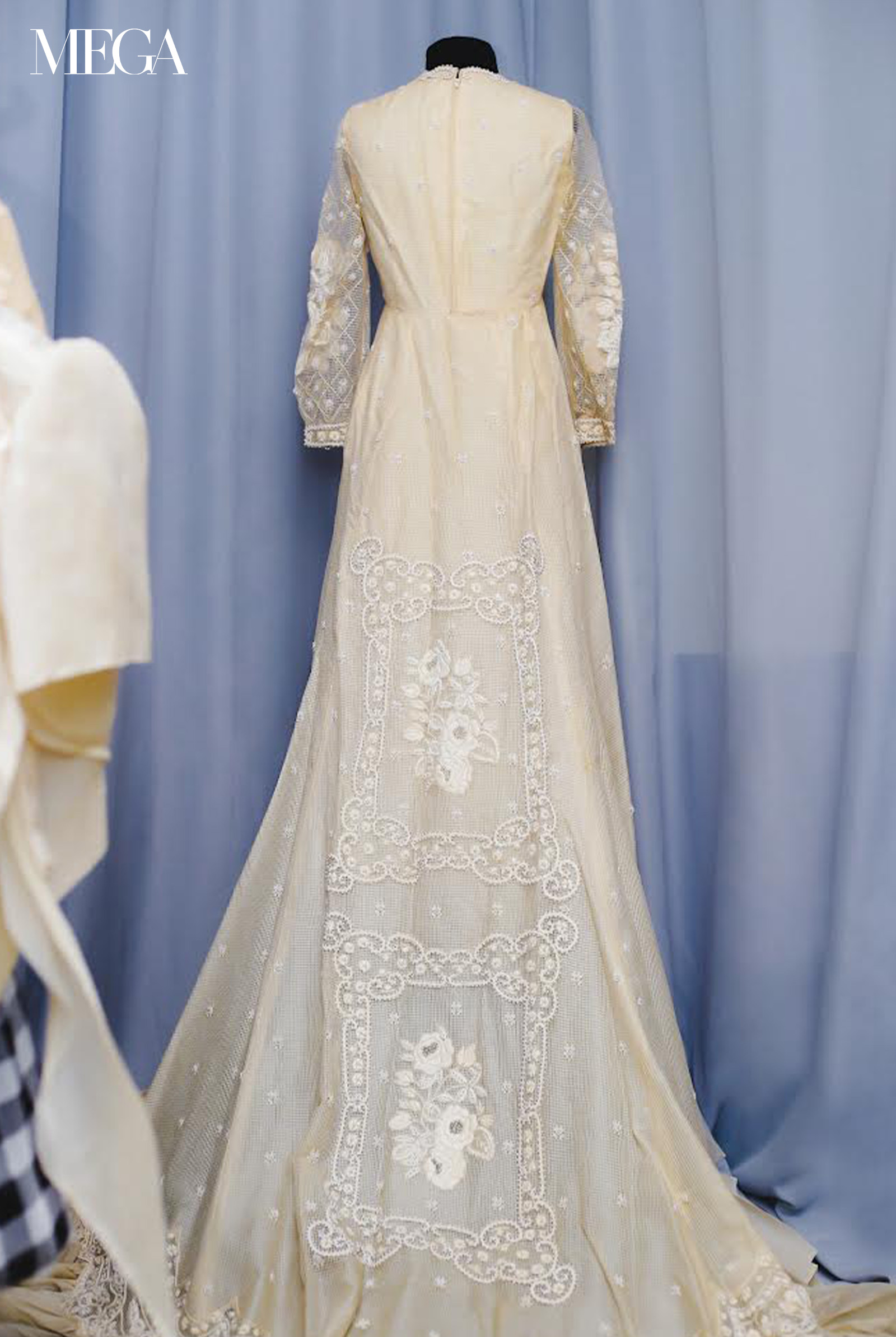
One story within this is designing Mrs. China Cojuangco‘s wedding gown, which was not just a creative endeavor for Lirag, but rather marked by a continuation of a cherished friendship cultivated over the years. A client turned friend, Mrs. Cojuangco entrusted her with the task of breathing life into her vision of a perfect wedding ensemble using her late father’s bearings as part of the garment. When her husband, the late Charlie Cojuangco, passed away after a year into their marriage, she had an idea to immortalize her husband’s spirit: to incorporate his favorite shirts and meaningful clothing into her wardrobe. “She honored him by having me also rework his barongs, favorite shirts and meaningful clothing so she may be able to use them,” Lirag reveals. “This is the reason I continue doing what I do.”
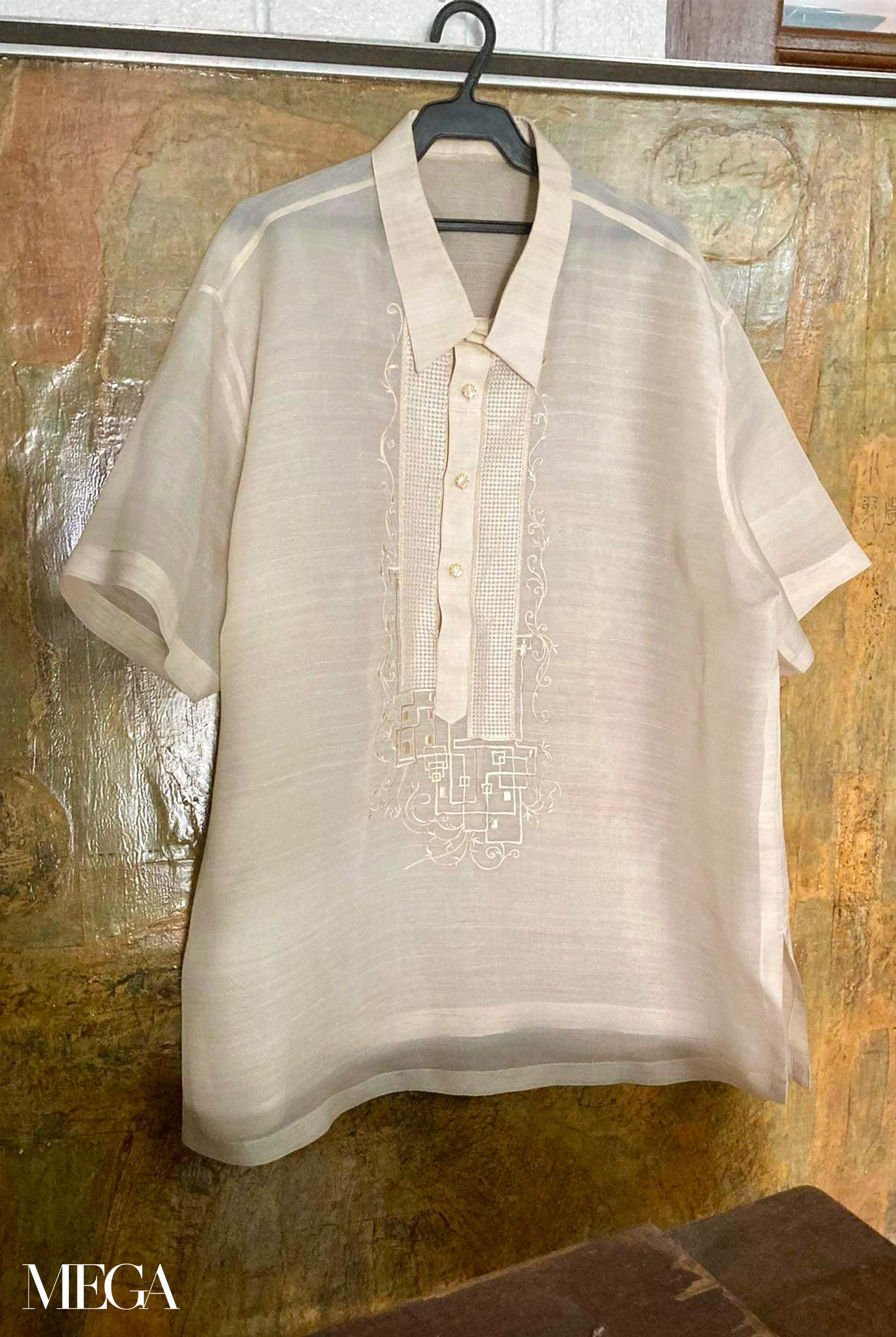
Living heirlooms across time
For the Romack brand, generation ties are the warp and weft, resilient fibers that endure decades of connections that never fail or frail, like Filipiñana fabric made whole again and again. From the Cojangcos to the Yuchengcos and the Prietos, they are bonds forged by the Romack women.
Lirag witnesses a tradition: beginning from her grandmother’s clients Imelda and Gretchen Cojuangco, Mary Prieto, Luz Matel, Liding Oledan, and Letty Montelibano, they still have the privilege of making pieces for their daughters and daughters-in-law including Marilou Lovina, Irene Francisco, China Cojuangco, and Miriam Ongsiako Montelibano, along with their grandchildren Isabel Francisco and Carissa Cosscolluela. There’s also Annette Gozon Valdes, with her mother Tessie Gozon and her daughter Anja Gozon Abrogar. They all become a living tableau of interconnected stories, not constrained by the constraints of time, but are more akin to heirlooms passed down through a familial lineage, each member carrying the weight of shared celebrations.
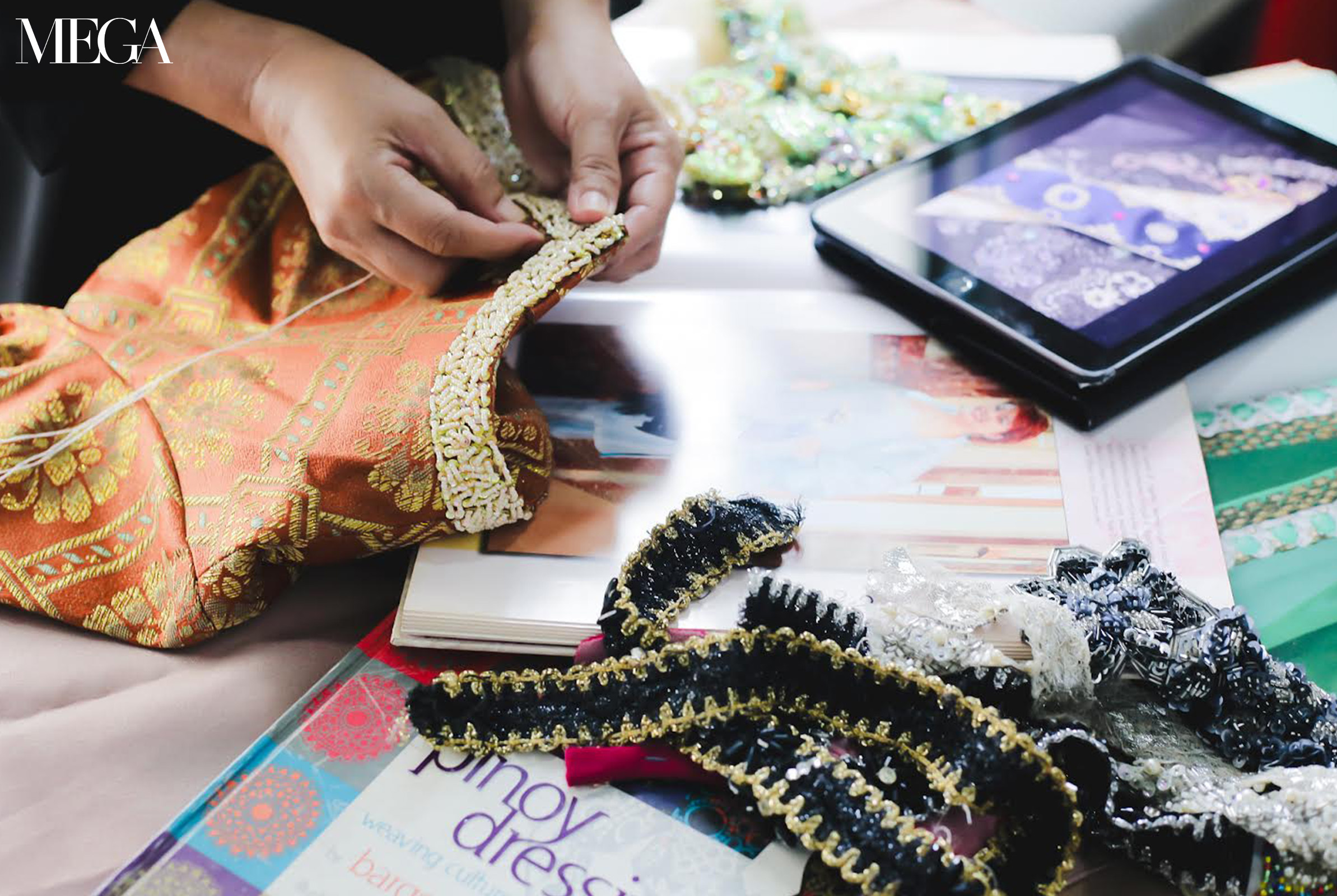
A generational thread
The prospect of passing on the legacy hangs in the air, a responsibility Lirag contemplates with hope. In a family predominantly composed of women, she envisions the possibility of her eight-year-old niece embracing the craft, bridging generations strengthened by tradition. “Hopefully, I will be able to pass it on. And it doesn’t just stop with me.”
Romack goes beyond being a family fashion house; it serves as a guardian of narratives, a preserver of memories embedded in the essence of its designs. Tina Romack Lirag embodies a dedication to safeguarding the past, embracing the present, and shaping a future where she continues to connect generations.
The post Tina Romack Lirag’s Design Legacy Binds Generations appeared first on MEGA.
Tina Romack Lirag’s Design Legacy Binds Generations
Source: Insta News Pinoy

0 Comments